Achieving the picture of a perfect lawn is very difficult. It becomes even more challenging in summer or when trying to work with bad soil. That’s why I’m going to share with you the best fertilizer to thicken grass.
This fertilizer is called Milorganite 0636 Organic Nitrogen Fertilizer. It’s an all-purpose, slow-release nitrogen fertilizer that has been used by professionals for over 80 years. Milorganite is perfect for thickening your lawn because it contains iron and other nutrients that promote growth. It also doesn’t burn like chemical fertilizers, so you can use it without worry.
To use Milorganite, simply apply it to your lawn according to the directions on the package. You should see results within a few weeks. If you are still looking for alternatives,read on!
Four Simple Steps to thicken your Grass
We all want thicker, healthier, lusher, and generally very attractive grass. The good news is you are just a few steps from attaining this, regardless of the condition of the grass now.
Step 1 of 4
Improve the soil
Correcting the existing grass and adding new grass to fill the current gaps proves futile if the quality of the soil is low.
Therefore, improving your soil is the first step to thickening your grass. The first step in this is testing the soil. The test allows you to see what exactly needs to be added to the soil. The process is simple and gives you an accurate starting point as it will allow you to know your lawn’s unique needs, which is an essential step in fixing any underlying problems.
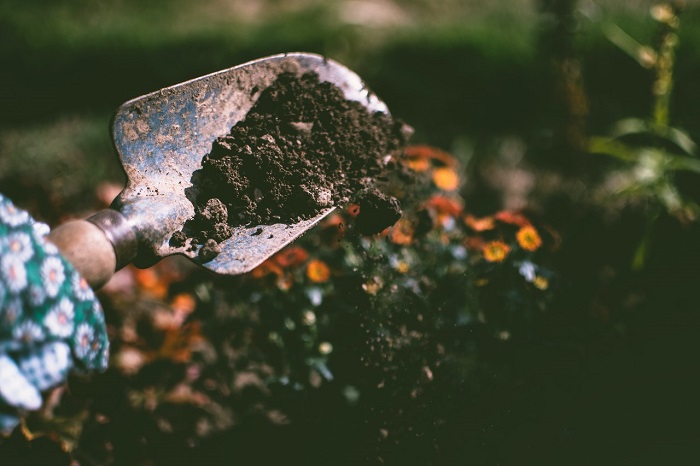
In the test, the soil pH is revealed together with the percentage of other nutrients that may inhibit grass’s proper growth.
To test out the ph level in your soil along with the percentage of nutrients, try this one out.
Step 2 of 4
Overseed
This is the process of sowing seeds into the already existing lawn. It is meant to fill any gaps and also plays the role of preventing the grass from getting thin. This creates a thicker lusher, healthier look. This is another great secret to maintaining a thick lawn all through.
Before adding the seeds, checking on the recommended season is imperative. This information is always provided by the company you purchase your seeds from.
Additionally, it is also crucial to purchase grass appropriate for the region you are in. some grass types do not do well in particular climatic conditions.
The quality of the seeds is also vital as it determines the performance of the grass. Ensure that you purchase premium, high-quality seeds.
- Enjoy a new lawn in just weeks with Scotts Turf Builder Rapid Grass Sun & Shade Mix; grows up to 2x times faster than seed alone when applied at the newlawn rate (subject to proper care)
- Unique, proprietary combination of sun and shade mix of seed and fertilizer results in full green grass that grows in just weeks; expect to see grass growing at a minimum of 12 days and maximum of 21 days
- This sun and shade grass seed and fertilizer combination will change the way you grow grass; its the most complete solution for large problem areas in your lawn and for establishing new grass
- Fall and Spring are the best times to plant grass seed; seed germinates best when temperatures are between 60°F and 80°F and the chance of frost has passed
- For best results, rake soil lightly to remove debris; apply grass seed with a Scotts spreader, then water daily or as needed to keep soil surface moist until the seedlings reach 2 to 3 inches tall; one 5.6-lb. bag seeds up to 2,800 sq.
Prices pulled from the Amazon Product Advertising API on:
Product prices and availability are accurate as of the date/time indicated and are subject to change. Any price and availability information displayed on [relevant Amazon Site(s), as applicable] at the time of purchase will apply to the purchase of this product.
Step 3 of 4
Add a fertilizer
While we keep adding fertilizer to crops and fruits on the farm, we rarely consider grass. Grass, like any other plant, requires nutrients to grow healthy. Most of the nutrients are usually leached with rainfall and irrigation.
For this reason, adding fertilizer throughout the growing season is paramount. For the existing grass, fertilizer adds the required nutrients such as nitrogen. Fertilizer is also needed when adding the new grass to promote vigorous root development. This firmly establishes the fresh grass.
Fertilizer usually comes with detailed directions from the manufacturer. Information includes the nutrients, usage, benefits, and everything you need to know before use. If you are in doubt, it is essential to consult the agricultural officer in your area.
- Eco-friendly
- Slow Release, feeds up to 3 months
- Aids in root development
- Contains non-staining iron
- Fertilizer Analysis is 6-
Prices pulled from the Amazon Product Advertising API on:
Product prices and availability are accurate as of the date/time indicated and are subject to change. Any price and availability information displayed on [relevant Amazon Site(s), as applicable] at the time of purchase will apply to the purchase of this product.
Step 4 of 4
Boost your lawn
Sometimes, purchasing seeds, fertilizer, and boosters can be challenging. Adding them at different times may also imply that you need to spend more time on your lawn. The three products purchased differently may also be far more expensive than when purchased as a one in all package. This way, you can save your time, energy, and hard-earned money.
3 in 1 lawn thickeners are readily available on the market today. They combine quality seeds, fertilizer, and enhancers, all in one product. This makes it very easy to use.
- 3-in-1 solution for thin lawns, including seed, fertilizer and soil improver
- Seed to fill gaps in your current lawn
- Fertilizer for thicker, greener turf
- Soil improver for enhanced root development
- Get up to a 50% thicker lawn with just one easy application with a spreader (subject to proper care; results may vary based on the current condition of the la
Prices pulled from the Amazon Product Advertising API on:
Product prices and availability are accurate as of the date/time indicated and are subject to change. Any price and availability information displayed on [relevant Amazon Site(s), as applicable] at the time of purchase will apply to the purchase of this product.
Another great benefit of this is compatibility and quality. You can get lime-enhanced seeds that are drought tolerant coupled with fertilizer and a booster that helps in healthy, faster germination.
If your soil pH is okay, you can still get a soil booster that improves your soil without altering the pH.
Getting the right lawn booster is all that matters in having a healthier and greener lawn. It is also imperative to ensure that you follow all the directions from the manufacturer from preparing the site and applying the products for optimum results.
How to Make Grass Thicker and Fuller
- Watering – irregular and inadequate watering causes thin and dead patches in the grass. To ensure thicker and fuller grass, ensure that it is watered adequately. That is one inch per week. However, more watering is needed in hotter climates.
- Aerating – aerating your lawn allows the grassroots to reach water, air, and nutrients, ensuring a thicker lawn.
- Fertilizing – this is to provide essential nutrients to your lawn. When the grass has all the needed nutrients in the right proportions, it grows lusher, thicker, and fuller.
- Overseeding – filling thin spots with new grass is an essential step to getting a fuller, thicker lawn. Ensure that the seeds that you purchase match the already existing grass.
- Weed control – weed competes with grass for nutrients and water. This makes the grass thin. Dig out the whole weed, including the roots, to maintain a healthy appearance on your lawn.
- Mowing correctly – thinning may be caused by mowing your lawn too short. Too short grass has decreased defense against pests and weather.
How to Thicken Lawn in Summer
During summer, thin, lackluster grass is not uncommon. Keeping your lawn lush and healthy is easier said than done during this season. The good news is that this is not impossible. Here are some critical tips on how this can be achieved starting from early, mid and late summer.
During Early Summer
1. Adding fertilizer
If your grass grows best at about 70 degrees Fahrenheit, it is classified as warm-season grass. You should fertilize such grass in early summer to boost it to grow thick and healthy. When fertilizing, timing is essential as it helps the grass stand higher heat while surviving with comparatively less water.
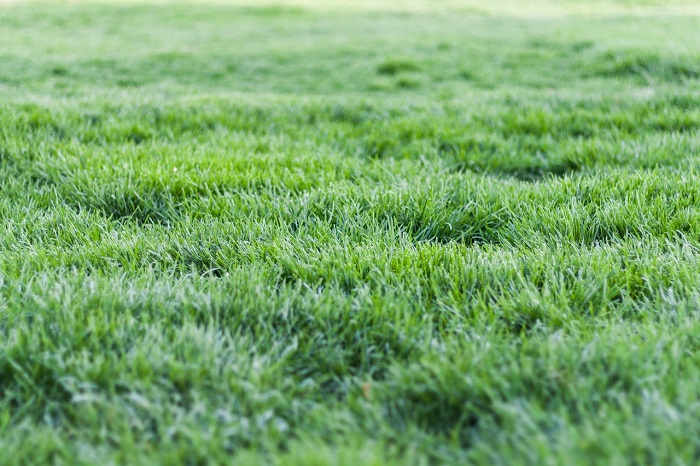
Applying too much fertilizer burns the lawn. This is because, during these months, the grass is usually very stressed. It is vital to follow the directions given by the manufacturer strictly.
Note: cool-season grass should not be fertilized during this time.
2. Mow high
This is usually done to encourage strong root growth. It also serves to improve the grass heat tolerance. If the grass is tall, it provides more shade which discourages the weeds which compete with the grass from germinating. However, it is vital to make sure that the blade used in mowing is sharp enough to decrease the chances of shredding it, leading to loss of moisture.

During this season, clippings on the lawn should be left on the grass as they feed it after decomposition.
During Mid-Summer
1. Watering
Like in any other season, water is essential for your lawn. Lack of water results in weaker unhealthy grass that is susceptible to pests and weeds. During mid-summer, watering should be done deeply and infrequently.
You should water your lawn either once or twice a week. When watering, ensure that the water reaches up to 5 inches deep. If you are unsure of the depth, you can push something like a screwdriver or a sharp stick to see if it slides smoothly.
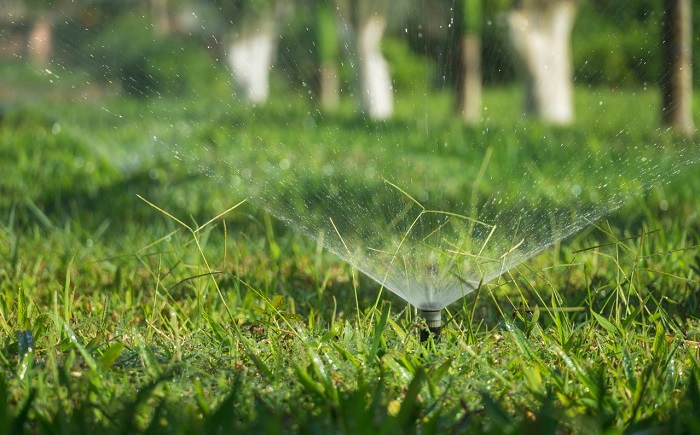
The lawn should be watered in the morning to ensure that the sun does not dry the moisture.
Note: if it is raining, do not continue watering.
2. Feed the grass as needed
During the mid-summer, it is also important to fertilize the grass. However, this is a very critical step that should be taken with much precaution. To avoid burning the already stressed grass, it is essential to check with the local garden store to ensure that it is safe.
During Late Summer
1. Watering and mowing
Just like in the mid and early summer, continue watering and mowing the grass as previously explained. This should keep the grass thicker and healthier during summer.
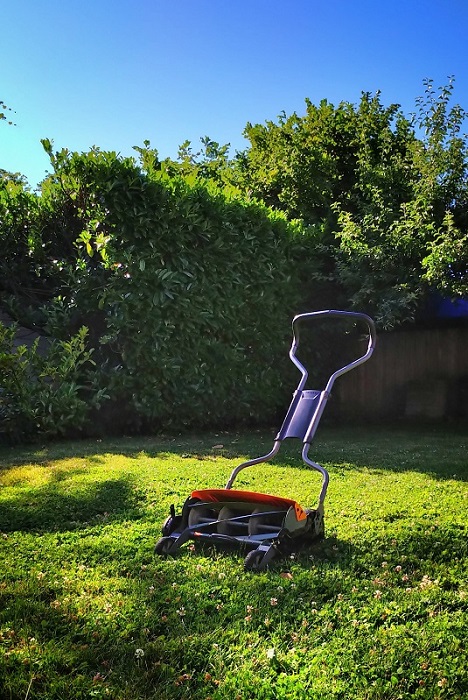
2. Aerating
This helps break up the compacted soil, thus allowing the grassroots to access water, air, and even nutrients. This helps your lawn maintain its thickness through the stressors.
Recommended Lawn Thickeners You Should Try:
This is a 3-in-1 ideal solution for a thin lawn. It is delivered to you with seeds, a soil improver, and a high-quality fertilizer. The easy-to-spread lawn thickener will ensure that you get up to a 50% thicker lawn that is greener, thanks to the first-rate fertilizer. These results are achieved with only one application.
The results for the first-time application depend on the current condition of the lawn. It is also subject to proper care.
The seeds in the package help fill the gaps in your lawn, if there are any, while the easy-to-spread soil improver enhances the development of roots. Needless to say, the three-in-one thickener perfects your lawn regardless of its current condition.
Scotts Turf Builder Thick’R Lawn Sun & Shade comes with easy-to-read directions on using it. Detailed steps to be followed to achieve the best results are also explained on their website.
This is everything you need to turn a weak, thin lawn into a greener and thicker lawn. Besides conditioning and feeding the existing lawn,the fertilizer builds thick,green grass naturally. Its pet friendly and best of all its safe to walk on right away. No matter the type of grass, this will definitely help thicken your grass naturally.
Pennington Lawn Booster Sun & Shade Mix Grass Seed & Fertilizer is a premium quality 3 in 1 product. It consists of grass seeds, soil amendment, and quality fertilizer. The three ensure that the existing lawn is nourished and also fills any current gaps with new life.
Rated among the best lawn thickeners, the 3 in 1 thickener produces a thick, fine-bladed, healthy dark blue-green lawn.
Unique to this excellent product is gypsum, which helps loosen the grass. This allows the grass to take root. The fertilizer also has lime, which improves grass growth and color. Additionally, it continuously releases nitrogen into the soil for up to 8 weeks. For this reason, you do not have to use the thickener too frequently.
The seeds in the package are not just ordinary low-quality seeds. They are resilient and require 30% less water per year than ordinary seeds.
It is easy to spread, and one application gives excellent results.
How to Thicken Grass in Clay Soil
Working around clay soil can be challenging as it creates problems in lawns. The soil is compacted, which results in very poor drainage. During the wet season, clay soil is soggy, while it becomes very hard during summer.
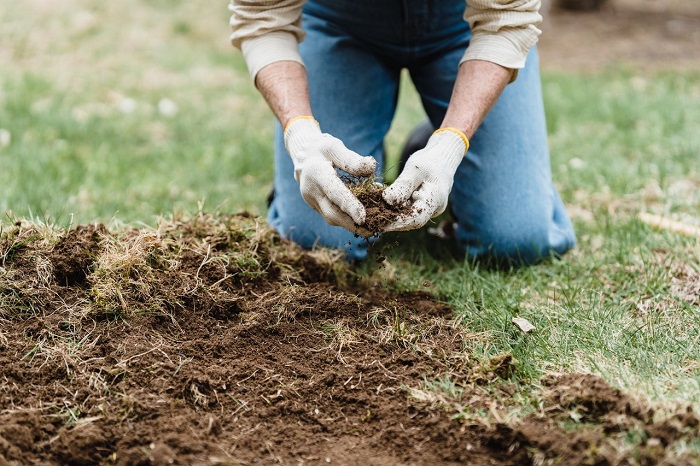
Since it is compacted, the roots of the grass are unable to access air, nutrients, and even water.
For this reason, the grass is stressed and weakened, which makes it very thin,
Wondering if there is a way out? There is. Here is a detailed solution of what should be done to thicken your grass in such conditions.
Solution 1
Mix clay soil with organic matter
Mixing clay soil with organic matter such as leaves and moss improves aeration and drainage. However, this is practically impossible if you already have an existing lawn. You do not want to till the lawn.
The solution is to top-dress the lawn with the compost and wait for the organic matter to decompose. This takes a lot of time.
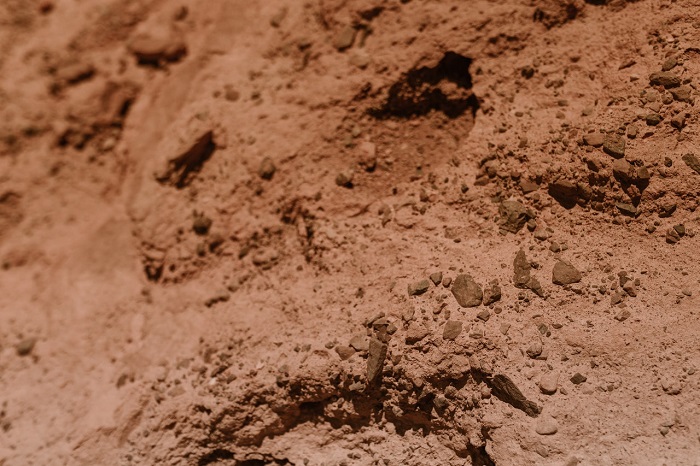
Solution 2
Increase the amount of air in the soil.
This is an even faster solution. Air can be increased by creating pores and channels in the clay. Soil penetrants are very effective in this. Other than creating tiny air spaces, they also ass liquid organic matter, which helps improve the drainage.
As the soil becomes healthier and more aerated, earthworms start to appear. They improve the soil by aiding in aeration resulting in thicker grass.
Overall a thicker, fuller, healthier lawn does not just come on its own, you will have to help it just a bit. Do you have other suggestions to thicken up your lawn? What have you tried?




